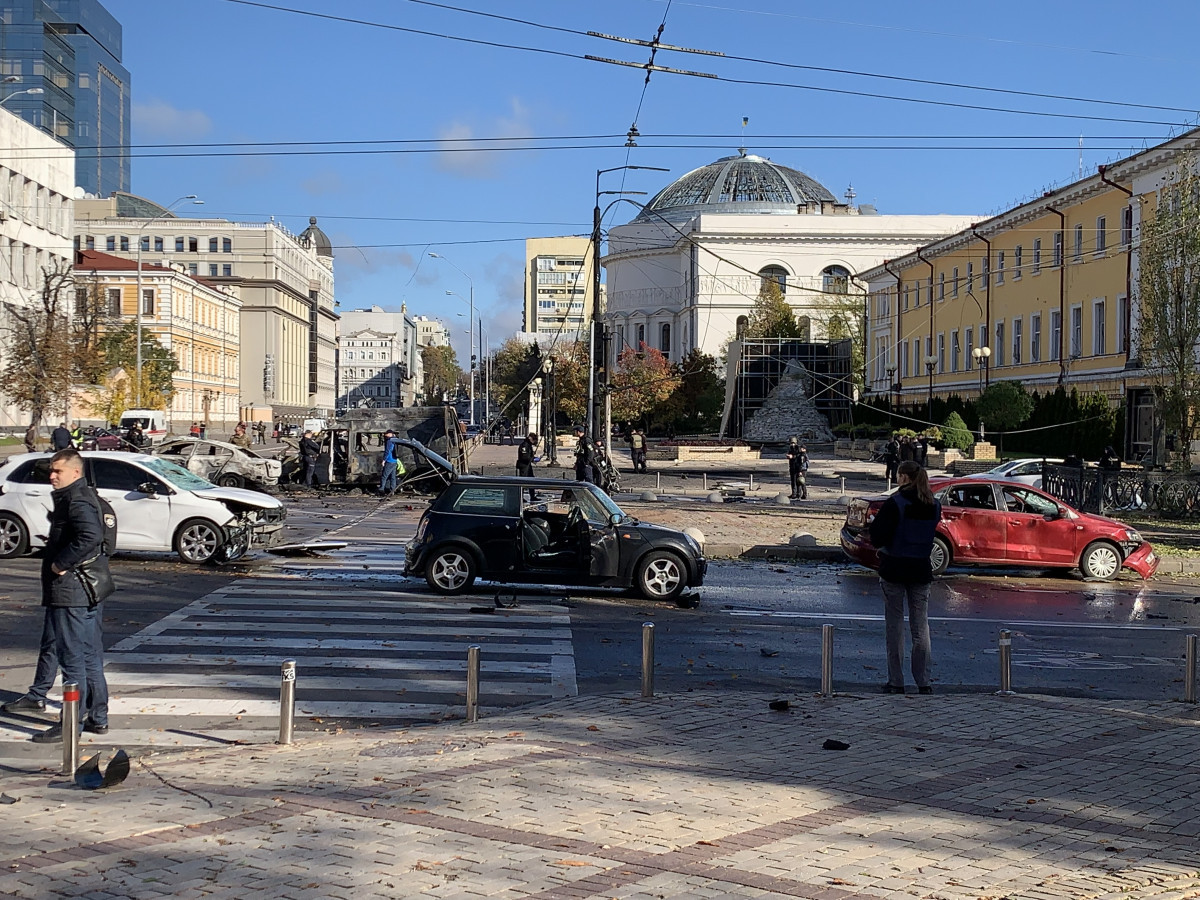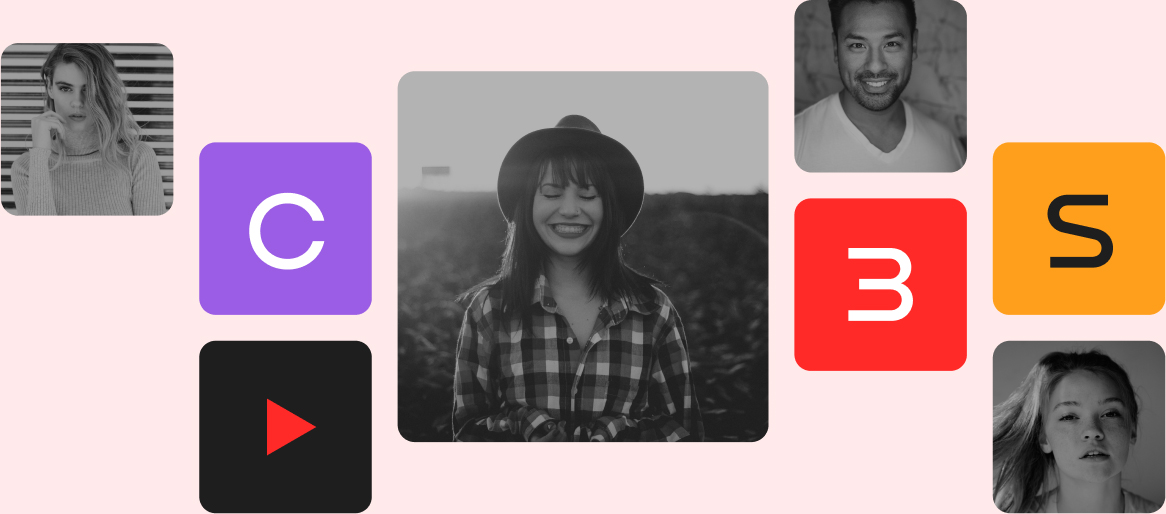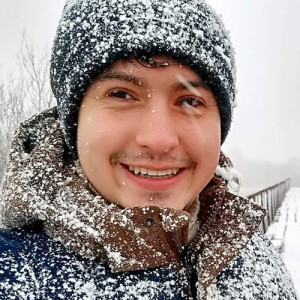
Faking Fear in the Wake of the October 10 Bombings in Ukraine
Faking Fear in the Wake of the October 10 Bombings in Ukraine


Українською текст читайте тут.
On October 10, Russians attacked Ukrainian cities, power plants, and business centers with missiles and UAVs. The attack knocked out water and electricity in some communities. Naturally, at this time, most of the Ukrainian media space was dominated by stories with pictures showing the aftermath of the Russian strikes. The same was true for pro-Russian Telegram channels, which have already been featured by Detector Media and were included in the list of telegram channels that regularly publish information biased toward Russia. These stories were interspersed with narratives intended to give readers a sense of insecurity and hopelessness. There were about a dozen of such narratives. Most of them were distributed in sync, possibly as a result of coordinated actions by their administrators.
Initially, between 10 a.m. and 10:30 a.m., there was a narrative that suggested Russia's attacks on Ukrainian cities and infrastructure were a supposedly natural Russian reaction to the Kerch Bridge explosions. These narratives had the additional implication that Ukrainian air defenses couldn't handle the attack, as one might expect because Russia is a strong adversary. We have recorded that such narratives were disseminated, among others, by Anatoly Shariy (848 thousand subscribers), Legitimate (778 thousand subscribers), and Resident (704 thousand subscribers) Telegram channels.
Then, between 10 and 11 a.m., Ukrainian authorities made their first statements: the situation was under control, and there was no need to panic. In response, Telegram channels complained that it was easy for the authorities to talk when they are hiding in a bunker, while people are under fire. At 11:03 a.m. and 11:04 a.m., this argument was posted by Anatoly Shariy and Whisperer Ukraine War (53 thousand subscribers).
In 20 minutes, another narrative appeared, designed to add to the anxiety: embassies were being evacuated. In fact, this is a fake, which was spread, in particular, by the Telegram channels Anatoly Shariy and New Edition. It's interesting to note that Vladimir Solovyov, one of the key Russian propagandists, was the first to post this fake on his Telegram channel. However, many diplomats reported that they remained working in Ukraine from a secure location. The fake was intended to spread panic and fear, to make Ukrainians think that the level of danger was so high and Ukraine's ability to resist was allegedly so low that foreign countries urgently evacuated their citizens. This is also yet another attempt by Russian propaganda to undermine Ukraine's foreign partners, implying that the partners flee as soon as it gets hot.
At the same time, Anatoliy Shariy twice said that Ukrainian volunteers who collected money "for revenge" for the bombardment of Ukraine, were raising it for things that have already been given free of charge by Ukraine's partners, or, alternatively, for an unknown purpose at all. Accordingly, all the money will allegedly end up in the pockets of Serhiy Prytula and Serhiy Sternenko. Between noon and 12:30 p.m., the same argument was spread by MediaKiller (108 thousand subscribers) and Whisperer Ukraine War.
Then, before noon, it was time to create fear with the escalation of the conflict. The main characters here were Alexander Lukashenko, Vladimir Putin, and the latter's spokesman Dmitry Peskov. The first one said that more Russian troops would come to Belarus, threatening Ukraine and NATO countries with retaliation for a possible attack on his country. Messages like these were shared by New Edition (377 thousand subscribers), Whisperer Ukraine War, and Anatoly Shariy.
Then there were posts quoting Putin, Peskov, and anonymous sources. According to them, the attacks on Ukraine were part of the "special military operation" and the bombs and drones were a way to entice Ukraine to negotiate with the Russians. Messages of this kind were spread by First News of War (436 thousand subscribers), VESTI (22 thousand subscribers), New Edition, Whisperer Ukraine War, Resident, and Legitimate.

Propagandists also claimed that the Ukrainian government demanded that photos and videos of the aftermath of the missile strikes not be published in order to hide what had actually taken place. The was shared, among others, by Telegram channels controlled by Russian special services. In their posts, they claimed that the Office of the President and the regional governors urged Ukrainians not to publish photos of the destruction caused by missile strikes, and the SBU was allegedly contacting administrators of public social media with demands to stop publishing such photos. The propagandists claimed that the authorities' demands were aimed at stopping the spread of panic, because "if there are no photos and videos, then there are no strikes and losses". In fact, it is recommended not to share photos and videos of missile strikes immediately after they happen, so as not to assist the enemy in refining their aim, not conceal the damage. Information about the missile strikes, as well as photos and videos of the events then gradually appear on the Internet and on the official pages of the authorities. Specifically, on President Volodymyr Zelenskyy’s page. Earlier, Detector Media explained in detail what and why shouldn’t be published during the war.

After 2 p.m., the number of fearmongering narratives and their variety dwindled. Later in the afternoon, the propagandists analyzed in this article spread messages that there might be new Russian attacks. There was a spate of fake news about Belarusian troops amassing on the Ukrainian border. The authorities quickly refuted this information; they also said the electricity consumption needed to be reduced, meanwhile the government was recovering from the shelling and would seek to prevent future incidents.
Propaganda and disinformation tried to reawaken Ukrainians' fear of Russia. It is primarily in Russia's interests to portray the bombing as a form of revenge for the Crimean bridge. The truth is, Russia continuously bombs Ukrainian cities. However, against the backdrop of the Ukrainian military's victories and the resilience of Ukrainian society, it was very important for Russia to show that it is capable of at least some degree of escalation.
The intensity and the nature of Russian propaganda narratives that attacked Ukrainians on October 10 resemble the first day of the full-scale Russian invasion. The goal was to spread panic and despair among Ukrainians to paralyze them from taking any meaningful actions. Russian propaganda sought to cause chaos so that Ukrainians would clog the roads with traffic or panic-buy buckwheat. Instead, Ukrainians raised money to buy weapons for the Ukrainian army. Ukrainian volunteer and politician Serhiy Prytula together with activist Serhiy Sternenko alone collected more than 206 million hryvnias ($5.6 million as of October 17) in 7 hours. Numerous foundations and small initiatives conducted crowdfunding at the same time. As expected, Russian propaganda attempted to invalidate these efforts, as Ukrainians did the exact opposite of what the propagandists hoped for.
Analyzed by: Oleksiy Pivtorak, Iryna Riaboshtan, Vita Namestnik
Photo: Anna Mamonova / Babel










